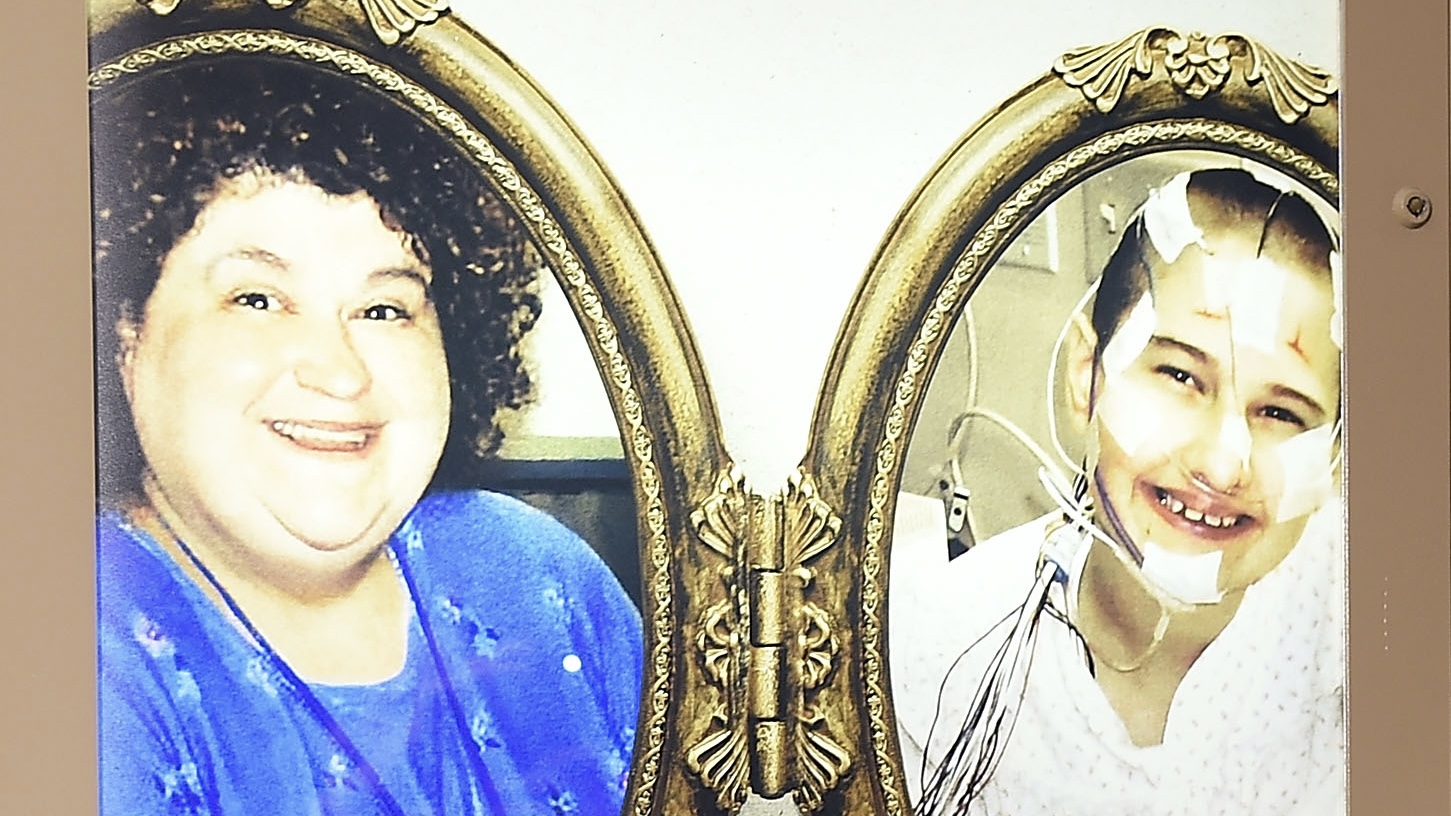The story of Gypsy Rose Blanchard has, for a long time, held a particular grip on the public's imagination, too it's almost a constant presence in discussions about true crime. This case, with its deeply unsettling layers, naturally sparks a lot of curiosity, especially when people think about the visual elements connected to it. When we consider the idea of "crime scene photos" tied to such a well-known situation, it brings up a lot of thoughts about what we see, what we learn, and the human side of these events.
Many folks, it seems, have a strong interest in understanding the full picture of these complex happenings, and often, visual evidence becomes a focal point. News outlets, like those you might find on popular online spots or through trusted news services, tend to cover these stories with a lot of detail, including, when appropriate, imagery that helps tell the tale. This is how many of us get our updates on breaking cases, cold cases, and true crime sagas that really stick with us, you know?
So, when a case like Gypsy Rose's comes up, where the circumstances are so out of the ordinary, the desire to see or understand any "crime scene photos" becomes a natural extension of that curiosity. It's about trying to piece together a very difficult puzzle, and sometimes, those visual pieces feel like they offer a deeper insight into what happened. This exploration isn't just about the pictures themselves, but what they represent in a story that has touched so many people.
Table of Contents
- Who Is Gypsy Rose Blanchard?
- What Draws People to Crime Scene Photos, Gypsie Rose?
- How Do We Access Information About Crime Scene Photos, Gypsie Rose?
- The Impact of Seeing Crime Scene Photos, Gypsie Rose
- The Role of News and Media in Showing Crime Scene Photos, Gypsie Rose
- Are There Ethical Considerations with Crime Scene Photos, Gypsie Rose?
- The Public's Fascination with Crime Scene Photos, Gypsie Rose
- Looking Back at Crime Scene Photos, Gypsie Rose and the Case
Who Is Gypsy Rose Blanchard?
Gypsy Rose Blanchard's life story is, in a way, one that many have come to know through news reports and documentaries. Her situation really brought to light a very unusual kind of abuse, often called Munchausen by proxy, where a caregiver, in this instance her mother, pretended she had various illnesses. This went on for years, apparently, with Gypsy Rose undergoing medical procedures she didn't need, and being made to appear much sicker than she actually was. The details of her upbringing are, basically, quite startling, involving a childhood spent in wheelchairs and being fed through tubes, all while she was, in fact, able to walk and eat on her own.
This long-term deception, you know, eventually led to a tragic event that shook many people. The discovery of her mother's death and Gypsy Rose's involvement in it was a huge turning point, bringing the entire hidden story out into the open. It's a tale that prompts a lot of discussion about mental health, abuse, and the sometimes-unseen struggles people face. Her personal journey, from being a victim of severe deception to her later actions and subsequent time spent in correctional facilities, has been widely followed by those interested in true crime narratives, as a matter of fact.
Personal Details and Bio Data of Gypsy Rose Blanchard
| Detail | Information |
|---|---|
| Full Name | Gypsy Rose Blanchard |
| Date of Birth | July 27, 1991 |
| Place of Birth | Louisiana, United States |
| Key Events | Subject of Munchausen by proxy abuse; pleaded guilty to second-degree murder in her mother's death. |
| Public Interest | Her case has been the subject of documentaries, TV series, and widespread news coverage. |
What Draws People to Crime Scene Photos, Gypsie Rose?
It's interesting, isn't it, how certain aspects of a true crime story can really capture our attention? When it comes to something like "crime scene photos" related to a case as well-known as Gypsy Rose's, there's a strong pull for many folks. Part of it, perhaps, is a natural human desire to understand things fully, to get as close as possible to the truth of what happened. We hear about events, and our minds, you know, try to fill in the gaps, to visualize the scene. Photos can seem to offer that direct window, a way to see for ourselves what the situation was like.
There's also a certain element of wanting to grasp the gravity of the event. A written description can convey facts, but a visual, even if it's just an image of a space, can sometimes communicate the atmosphere or the scale of something in a way words can't quite manage. For a case with such an unusual background, where the victim was also involved in the crime, people might be looking for any piece of information that helps them make sense of the complex motivations and outcomes. It's a bit like trying to solve a puzzle, and these visuals are, in a way, perceived as key pieces.
Then, too, there's the broad public interest in true crime itself. People often follow these stories on various news platforms, looking for updates and details. When a case is as compelling as Gypsy Rose's, the desire to see all available evidence, including any "crime scene photos," becomes a part of that larger fascination. It's about the human element, the drama, and the often-shocking reality of what people are capable of, both good and bad. So, it's really a combination of curiosity, a search for understanding, and the general draw of real-life mysteries that makes these visuals a point of interest.
How Do We Access Information About Crime Scene Photos, Gypsie Rose?
When people are looking for information about cases like Gypsy Rose's, including any potential "crime scene photos," they often turn to a few key places. Most folks, you know, start with reputable news organizations. These are the places that aim to give you the latest updates on crime news and investigations, like those found on major news websites or through wire services that provide independent reporting. They're usually the first to cover breaking crime cases, and sometimes, they'll share relevant videos and photos if they're deemed appropriate for public viewing and help tell the story.
Beyond the major news outlets, there are also specialized platforms and services that focus specifically on crime information. Some public-facing crime maps, for instance, allow you to check crime activity in different areas, though these typically focus on general incidents rather than specific case details or "crime scene photos." Still, they show how much information about crime is out there and how easy it is, in some respects, to get a sense of what's happening around us. These platforms are designed to make it simpler to follow news for your favorite topics, which for many, includes true crime sagas.
It's also worth remembering that the internet has made it incredibly easy to find information on just about anything. If you're looking for details on unsolved criminal cases, murders, kidnappings, or other true crime stories, a quick search can lead you to articles, videos, and sometimes, even photos from various sources. The key is to be mindful of where the information comes from, since not all sources are equally reliable. But, basically, if there's public interest in "crime scene photos" related to a case, the news channels and online platforms are where that information, or discussions about it, tend to appear.
The Impact of Seeing Crime Scene Photos, Gypsie Rose
Looking at images connected to a difficult event, especially something like "crime scene photos," can have a pretty significant effect on a person. For many, there's a strong emotional response, a sense of gravity that comes with seeing the aftermath of something truly unsettling. It can bring the reality of a situation home in a way that simply reading about it might not. This isn't just about curiosity; it's about confronting the harsh facts of a human tragedy, which can be, honestly, quite a lot to take in.
For some, seeing these kinds of visuals might lead to a deeper sense of empathy for those involved, both the victims and, in complex cases like Gypsy Rose's, even the perpetrators, given the circumstances of their lives. It can make the abstract concept of a crime feel very real and personal. On the other hand, it can also be disturbing, causing feelings of unease or even distress. The human mind processes these images in different ways, and what one person finds informative, another might find deeply unsettling. It's a very individual experience, you know.
Moreover, the availability of "crime scene photos" can sometimes shape public opinion or add to the narrative surrounding a case. While news organizations often make careful choices about what they show, the existence of such images, even if not widely circulated, can influence how people talk about and remember a particular event. It's a powerful tool for conveying information, but with that power comes a certain weight, a responsibility to consider the impact on those viewing them and on the story itself. So, it's not just about seeing; it's about what that seeing does to us and how it changes our perspective, too.
The Role of News and Media in Showing Crime Scene Photos, Gypsie Rose
The way news and media outlets handle something like "crime scene photos" in a high-profile case, like Gypsy Rose's, is a pretty important topic. These organizations, whether it's a major television network or a well-known online news source, have a big job: to inform the public. Part of that job can involve showing images that help explain a story, but they also have to think about the impact of those images. It's a balance between giving people the full picture and being mindful of the sensitivity of the content, you know?
Often, when you get the latest crime news and updates from places like a popular news website, they'll include photos or videos. These visuals are usually chosen very carefully. They might show the general location, or perhaps objects that are relevant to the case, without being overly graphic or intrusive. The goal is to provide context and evidence, helping people understand the story better, rather than just showing things for shock value. It's about providing independent journalism, which means being responsible with the information they share.
The decision to publish any "crime scene photos" related to Gypsy Rose, or any case, usually goes through a lot of consideration by editors and journalists. They think about whether the image adds real value to the public's understanding, if it respects the privacy of those involved, and if it meets their own ethical guidelines. So, while there's a public desire to see everything, the media often acts as a filter, making choices about what is appropriate and necessary to share, basically. This helps ensure that while people can find breaking crime cases and related visuals, it's done with a certain level of care and thought.
Are There Ethical Considerations with Crime Scene Photos, Gypsie Rose?
When we talk about "crime scene photos," especially those connected to a case as sensitive as Gypsy Rose's, there are, actually, quite a few ethical questions that come up. It's not just about whether the pictures exist, but about whether they should be widely shared or viewed. One big consideration is the respect for the individuals involved. Even when a case is public, there's a human element, and showing graphic or very personal images can be seen as an invasion of privacy or a lack of dignity for those who were part of the event.
Another point to think about is the potential impact on the viewer. As we touched on earlier, seeing unsettling images can be disturbing. News organizations and platforms often have policies about what kind of content they'll show, trying to balance the public's right to know with the potential harm that might come from viewing certain materials. This is why you often see warnings before sensitive content, or why some images are blurred or cropped. It's about trying to protect the audience while still delivering the news, you know?
Then there's the question of sensationalism. Sometimes, the desire to see "crime scene photos" can be driven by a morbid curiosity rather than a genuine search for understanding. Media outlets have a responsibility not to feed into that sensationalism, but instead to present information in a way that is informative and respectful. So, while it's easier than ever to find all sorts of crime news and updates, the ethical side of sharing and viewing these images, especially those tied to a case like Gypsy Rose's, remains a very important discussion point, basically.
The Public's Fascination with Crime Scene Photos, Gypsie Rose
It's pretty clear that people have a deep, enduring interest in true crime stories, and that fascination often extends to wanting to see any available "crime scene photos." For a case like Gypsy Rose's, which has so many unusual twists and turns, this interest is, honestly, amplified. Part of it might be a way to process the darker aspects of human behavior, to try and understand why certain things happen. It's a bit like trying to solve a mystery, where every piece of information, including visuals, feels like it could unlock a deeper truth.
Some people, you know, might feel that seeing the actual scene helps them grasp the reality of the situation more completely. A narrative can only go so far; a visual can, in some respects, make the story feel more concrete and less abstract. It's a way of connecting with the events on a more visceral level. This isn't always about being sensational; for many, it's about seeking a fuller understanding of the human condition and the complexities of the justice system. They want to get the latest news on crime and criminal investigations, and for some, that includes the visual details.
Also, the widespread availability of information through various news channels and online platforms means that these stories, and the discussions around them, are very accessible. If people are talking about a case, and there's a mention of "crime scene photos," the natural inclination for many is to seek them out. It's part of how we consume information in this day and age, where the line between news and entertainment can sometimes blur. So, the fascination with "crime scene photos" in cases like Gypsy Rose's is, in a way, a reflection of our broader interest in true crime and our desire to understand the real-life dramas that unfold around us.
Looking Back at Crime Scene Photos, Gypsie Rose and the Case
When we consider the entire story of Gypsy Rose Blanchard, and the public's ongoing interest in it, the idea of "crime scene photos" becomes a small but significant part of a much larger narrative. The case itself is a profound example of hidden abuse and its tragic consequences, a story that continues to resonate with many people. Any visual evidence, like photos from the scene, plays a role in how the public perceives and remembers these events, even if those images are not widely shared or are only discussed in general terms, you know.
The way news outlets, like those that provide breaking crime cases, videos, and photos, choose to cover such sensitive topics truly shapes our collective understanding. They decide what information is presented and how, which means they hold a lot of influence over the public's perception of "crime scene photos" and the case as a whole. It's a constant effort to balance informing the public with respecting the gravity of the situation and the individuals involved. This is why getting your news from sources committed to independent journalism is, in some respects, so important.
Ultimately, the discussion around "crime scene photos" in the context of Gypsy Rose's story highlights our deep human connection to true crime sagas. We want to understand, to empathize, and sometimes, to simply bear witness to the difficult realities of life. Whether it's through detailed articles, documentaries, or the careful presentation of visual evidence, the story continues to be a point of reflection for many, reminding us of the hidden struggles and complex outcomes that can arise from extreme circumstances. It's a case that, basically, continues to prompt a lot of thought and conversation.
The story of Gypsy Rose Blanchard, and the broader discussion around "crime scene photos" within such a narrative, truly shows the depth of public interest in complex true crime sagas. From how we access news through various platforms to the ethical considerations of viewing sensitive materials, this exploration has touched upon the human desire to understand difficult realities. It highlights the role of news organizations in shaping our perception of events and the lasting impact such stories have on our collective consciousness.


